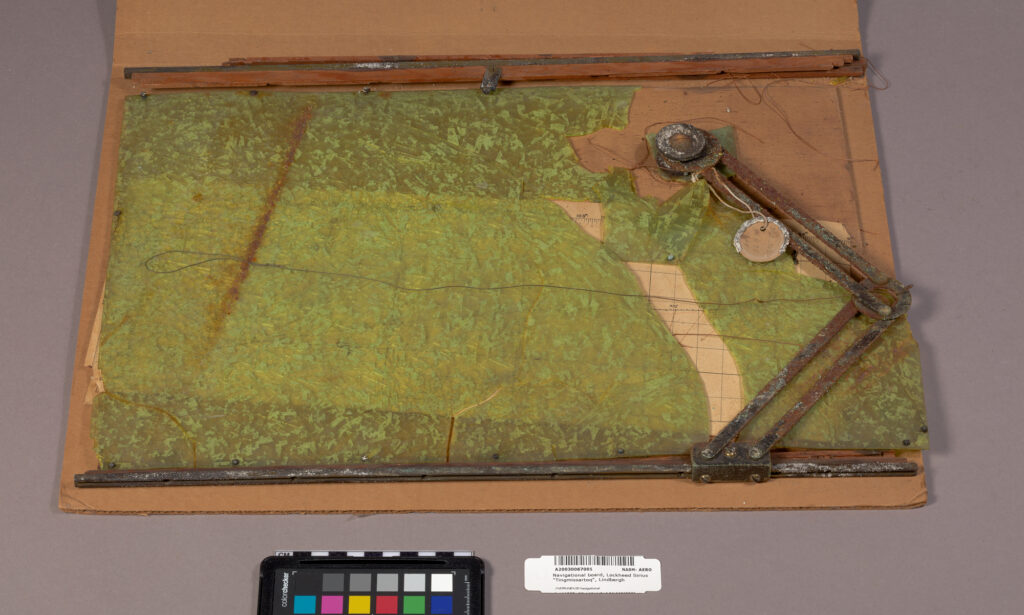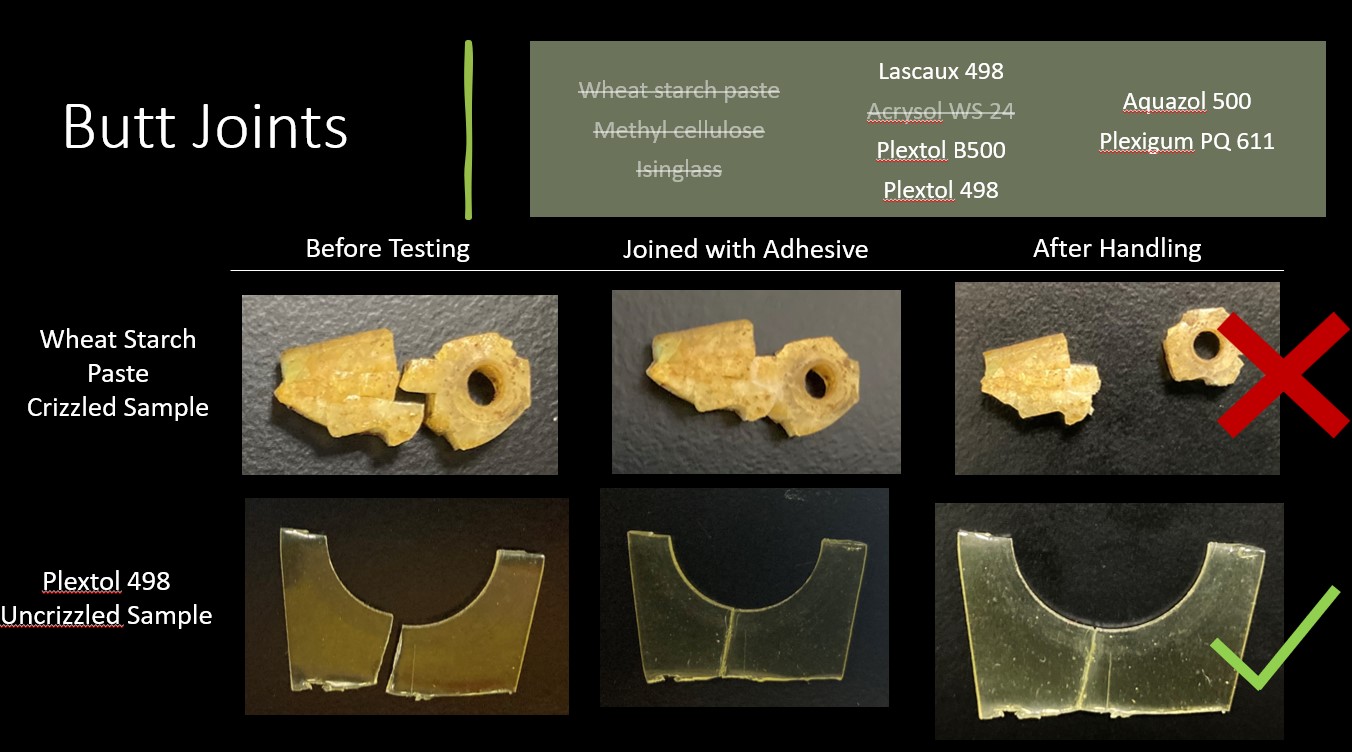“Adhesives for Degraded Cellulose Nitrate: Navigating an Intervention”
Speaker: Emily Brzezinski, National Air and Space Museum
Summary by Sejal Goel, Fellow at the National Park Service, Harpers Ferry
In this talk, Brzezinski discussed intervention on crizzling cellulose nitrate. Her work primarily focussed on the treatment of a navigation board used by aviators Charles and Anne Lindbergh in the 1930s. Brzezinski endeavoured to find an adhesive and consolidant that would stabilize the object for possible display.

Degradation of the Object
The navigation board was previously transparent, but over the years has deteriorated and turned a “sickly” green color. Brzezinski noted advanced crizzling due to hydrolysis, with few plasticizers remaining.
Of particular note is that, unlike film and other cellulose nitrate objects, the navigation board crizzled from the inside outwards, with the breaks only occurring once the crizzling reached the edges of the thin sheet. Brzezinski compared the thin, warped, broken pieces to that of a sprung ceramic.
Whilst the deterioration of cellulose nitrate can be slowed in proper cold storage, it will not stop its eventual deterioration back to cellulose in the form of crumbly yellow debris.
Comparing Adhesives
There is a general apprehension in the field with regards to using adhesives on plastics in general, and specifically with cellulose nitrate. However, Brzezinski argued that we need to discuss active treatment, and overcome the apprehension in order to balance the need to protect objects for an unknown future compared with display for present audiences.
Previous work at the National Air and Space Museum has used Japanese-paper backings on objects along with acrylic emulsions and resins. This, alongside a survey on the AIC Conservation DistList was utilized as a basis for Brzezinski’s work to aid in the selection of possible adhesives.
Adhesives selected for study were assessed for strength, retreat-ability, and handling properties for both butt joins, consolidation, and for backing.
In order to determine the most appropriate consolidant, adhesives were dyed and dropped onto samples. Photomicrographs were taken at cross-sections to determine the rate and level of penetration into the porous material of a test sample from the window of a Douglas World Cruiser that had completely crumbled. The largest hurdle in these tests was the high surface tension of the un-crizzled areas of the cellulose nitrate, limiting penetration.

Plexigum PQ 611 proved a promising consolidant, presenting a good penetration rate and level, as well as a controllable evaporation rate and potential for reversibility due to its solubility in Shellsol (depending on exposure time of materials). However, this was reconsidered after the test pieces broke upon handling. This was attributed to the consolidant penetrating crizzled areas but could not overcome the surface tension of the un-crizzled areas and thus, did not present a strong enough butt join between areas of crizzled and un-crizzled cellulose nitrate.
Plextol B-500 was trialled and ultimately selected for both backing and butt joins for the Lindbergh navigation board. Aquazol 500 was used to bridge warped areas from the front in order to further stabilize the object.
Main Take-aways
Brzezinski highlights the need to reconcile the theoretical and practical considerations of plastic conservation. This includes transparency and dissemination of case studies and treatments. She argues the need to consider active care and conservation of materials like cellulose nitrate where necessary, especially if objects are going to be displayed in the near future.
In the active treatment of cellulose nitrate, Brzezinski’s study demonstrates that there are multiple adhesive options. This allows conservators to determine the criteria for adhesive selection per object, including strength needed, re-treatability, etc.
In recognition of the hesitancy by the wider community to actively treat plastics due to concerns with re-treatability, Brzezinski highlighted that the reversibility concern is brought up with the consolidation of the majority of materials encountered in collections.
Unfortunately, the long-term consequences of the treatment are unknown. However, this study will provide this consideration for future projects, including the work of a current Engen Fellow at the museum. It was recognized that this treatment is inherently temporary, given the inherent vice of cellulose nitrate, which will continue to crumble over time.